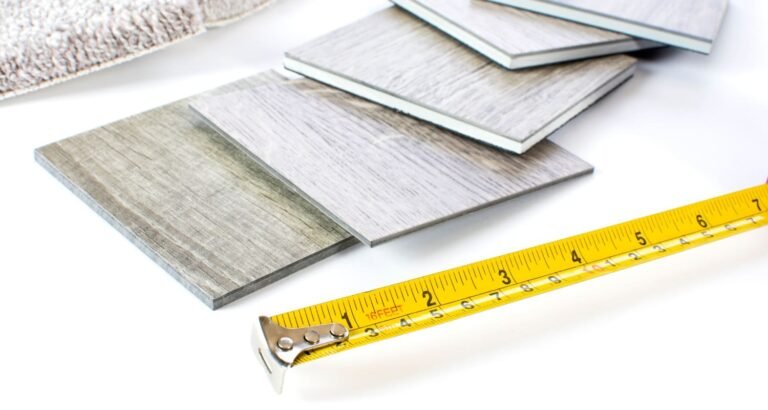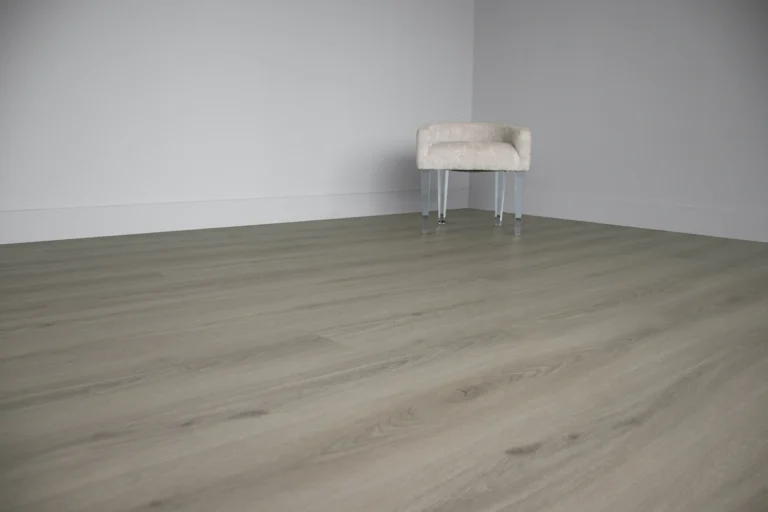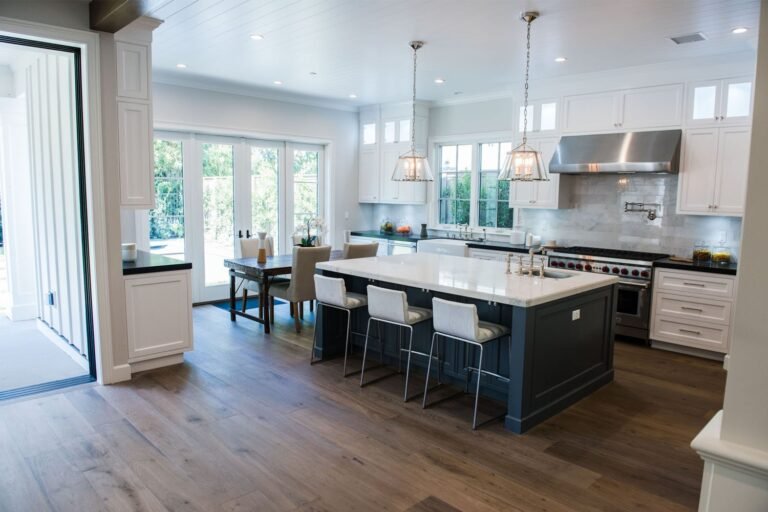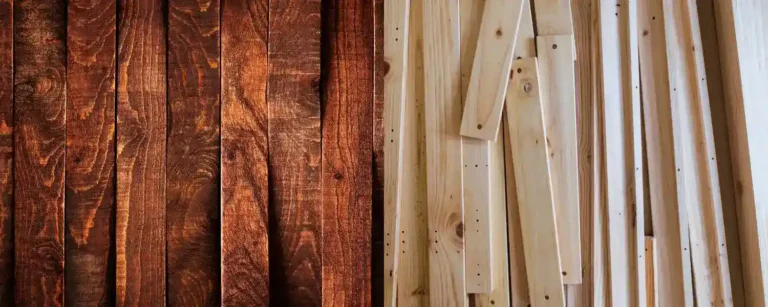Choosing Between Red Oak vs White Oak Flooring: Which Is Best for Your Home?
Are you debating between red oak vs white oak flooring? The right flooring can transform your living space by adding warmth, elegance, and lasting value. Oak flooring is a popular choice among homeowners for its distinctive qualities. This guide will clear up the differences between red and white oak engineered hardwood flooring, helping you choose the one that best fits your needs.
The Appeal of Oak Flooring
Homeowners often choose oak flooring for its remarkable qualities. Let’s explore why oak, whether red or white, is a top choice.
What Makes Oak Flooring Popular?
Oak flooring wins fans for its design flexibility, impressive durability, and timeless look. Here are the main reasons for its popularity:
- Versatility in Design: Oak flooring is a versatile choice that suits any decor, whether your home features traditional or modern aesthetics.
- Durability and Longevity: Oak floors are highly durable and easily withstand daily wear and tear.
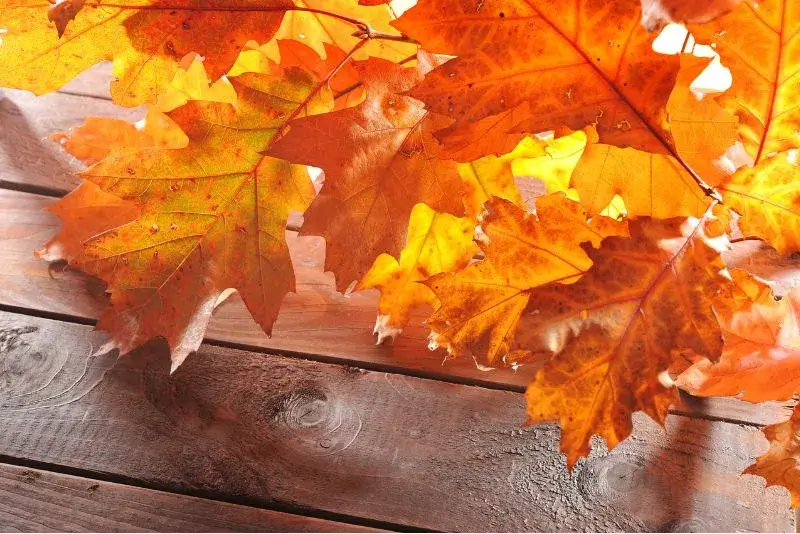
Distinguishing Features of Red Oak and White Oak
Overview of Red Oak and White Oak Species: While both are part of the oak family, red oak has a pinkish hue, and white oak features a more neutral, brownish tone.
Growth Patterns and Geographic Distribution: Red oak is common in Eastern North America, while white oak has a broader range in the East and Central regions.
Natural Grain Patterns and Color Variations: Red oak has a pronounced grain pattern that adds a distinct texture, whereas white oak’s grain is subtler, giving it a smoother look.
Comparing Red Oak and White Oak Flooring
Identifying the differences between red and white oak is essential for selecting the best flooring. Here are their unique characteristics:
Key Aesthetic Differences Between Red Oak and White Oak
Several aspects distinguish red oak from white oak, especially in their appearance:
- Grain Patterns: Red oak’s pronounced grain adds texture and character, while white oak’s subtler grain offers a smoother look.
- Color Variations: Red oak has a warm, pinkish tint, enhancing the room’s coziness, which is ideal for traditional settings. White oak, cooler in tone, suits modern decor with its neutral feel.
- Warmth and Tone: Red oak’s warmth provides a cozy feel, which is popular in traditional interiors. White oak’s cooler tones offer a neutral backdrop, which is excellent for contemporary designs.
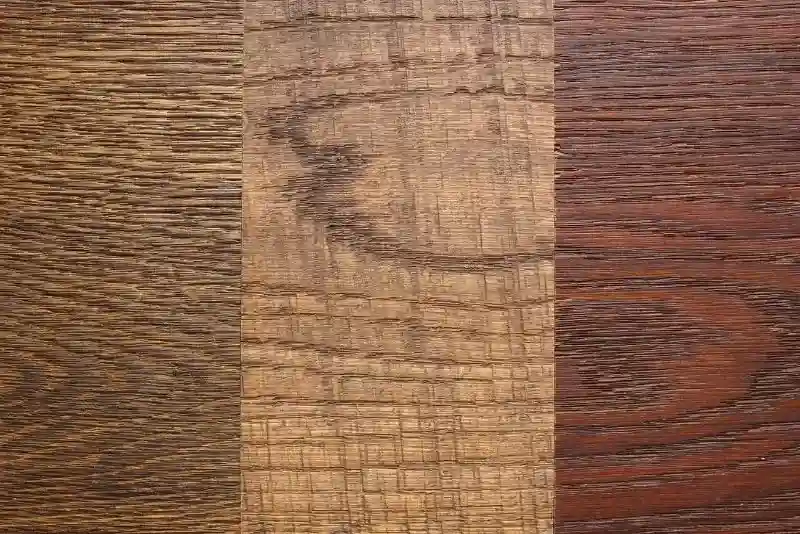
Performance and Durability: Red Oak vs White Oak
Red and white oak also vary in performance:
- Response to Humidity and Climate Changes: White oak is more moisture-resistant than red oak, offering greater stability in varied climates and humidity levels.
- Janka Hardness Rating Comparison: Although both are durable, white oak has a higher Janka hardness rating, giving it slightly better resistance to dents and scratches.
Making the Practical Choice: Red Oak or White Oak?
The choice between red and white oak affects more than just aesthetics—it also influences your budget and property value. Here are some considerations:
Analyzing Costs and Value of Oak Flooring Types
Understanding the costs and benefits of red and white oak flooring can guide your decision:
- Initial Cost Comparison: Red oak is typically less expensive upfront, providing a cost-effective option.
- Long-Term Cost Comparison: White oak’s greater durability can mean lower long-term costs for maintenance and replacement.
- Impact on Property Resale Value: Flooring from either oak can boost your home’s resale value thanks to its premium look and durability.
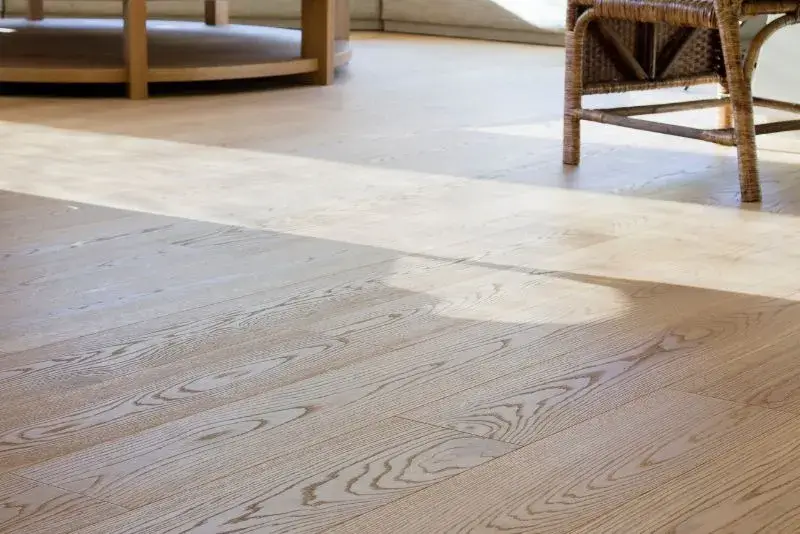
Exploring Varieties and Cuts of Oak Wood
The wood’s grade and cut significantly affect the appearance of your flooring. Let’s explore the varieties and grading options for red and white oak.
- Rift-Cut: Offers a straight, uniform grain, ideal for modern designs.
- Quarter-Sawn: This cut enhances stability and displays a unique flecked appearance, favored in traditional and rustic interiors.
- Live-Sawn: A combination of rift and quarter-sawn features, live-sawn oak fits various styles.
Sustainable Choices: The Environmental Impact of Oak Flooring
Choosing sustainably sourced red and white oak supports responsible wood harvesting and helps preserve forests. These practices ensure ecosystem health and reduce the carbon footprint from production and transportation, making oak flooring an ideal choice for environmentally conscious homeowners.
Styling Your Space
Design Trends in Oak Flooring
- Wide Planks vs. Narrow Planks: Wide planks are trending for their contemporary, expansive look. In contrast, narrow planks offer a classic appeal.
- Matte vs. Glossy Finishes: Matte finishes are popular for their sophisticated look and ability to conceal imperfections; glossy finishes provide a more formal, reflective look.
- Textured vs. Smooth Surfaces: Textured floors add depth and suit rustic styles; smooth floors offer a modern look. In contrast, smooth surfaces provide a sleek, contemporary look that pairs well with modern interiors.
Matching Oak Flooring with Interior Designs
- Modern and Minimalist: White oak’s smooth grain and neutral tones are perfect for minimalist designs.
- Rustic and Farmhouse: Red oak’s warmth and texture fit beautifully with cozy, rustic decors.
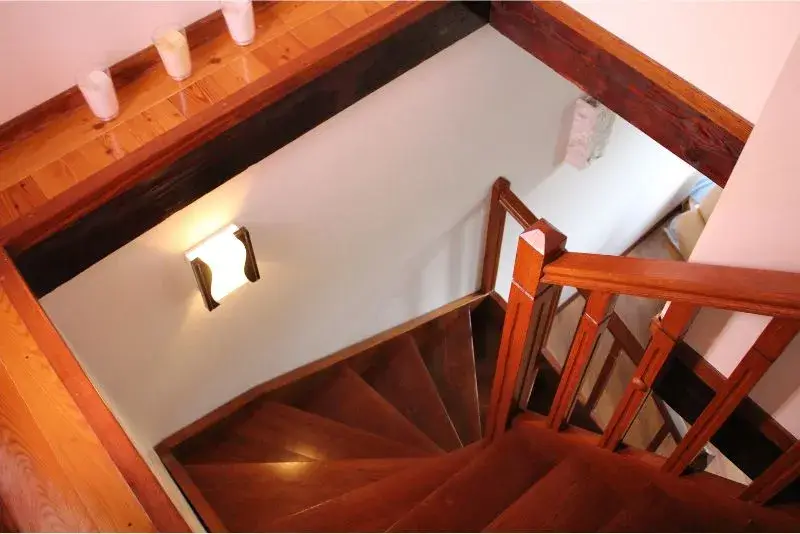
Essential Maintenance Tips for Oak Flooring
Proper care is essential to maintain the beauty and longevity of your oak floors. Here are some key maintenance tips:
Best Practices for Cleaning and Preserving Oak Floors
Regular cleaning prevents dirt build-up and maintains the floor’s shine.
- Sweeping and Vacuuming: Regular sweeping or vacuuming prevents surface scratches and keeps floors pristine.
- Mopping and Polishing: Occasional mopping with a suitable cleaner and polish can refresh and protect the floor’s surface.
Learn in detail about cleaning oak flooring in our comprehensive blog, “How To Clean Engineered Hardwood Floors?“
Pro Tips for Preventing Damage to Oak Flooring
Taking preventive measures can extend the life of your oak flooring and minimize the need for repairs.
- Furniture Pads: Use pads under heavy furniture to avoid scratches and indentations.
- Area Rugs and Mats: High-traffic areas benefit from rugs and mats, protecting floors from spills and wear.
DIY: Fixing Minor Damages in Oak Flooring
Addressing minor damage prevents it from worsening and extends the lifespan of your oak flooring.
- Filling Gaps and Cracks: Wood filler maintains smoothness and prevents moisture damage.
- Sanding and Refinishing: Periodic refinishing can remove scratches and restore original beauty.
Best Practices for Installing Oak Flooring
Correct installation ensures the durability and appearance of your oak flooring. Here are essential techniques:
Preparing for Oak Flooring Installation
Before installing your oak flooring, thorough preparation and acclimatization ensure easy installation.
- Subfloor Inspection and Preparation: A well-prepared subfloor is essential for a stable, squeak-free installation.
- Acclimating Wood to Ambient Conditions: Let the wood adjust to your home’s climate to prevent post-installation issues.
Oak Flooring Installation Techniques
Several installation methods are available for oak flooring, each with advantages and considerations.
- Nail-Down: A traditional method that involves nailing the oak planks to the subfloor.
- Glue-Down: Adhesive secures the planks directly to the subfloor, offering a quieter floor.
- Floating Floor: This method allows the floor to ‘float’ over the subfloor, simplifying installation.
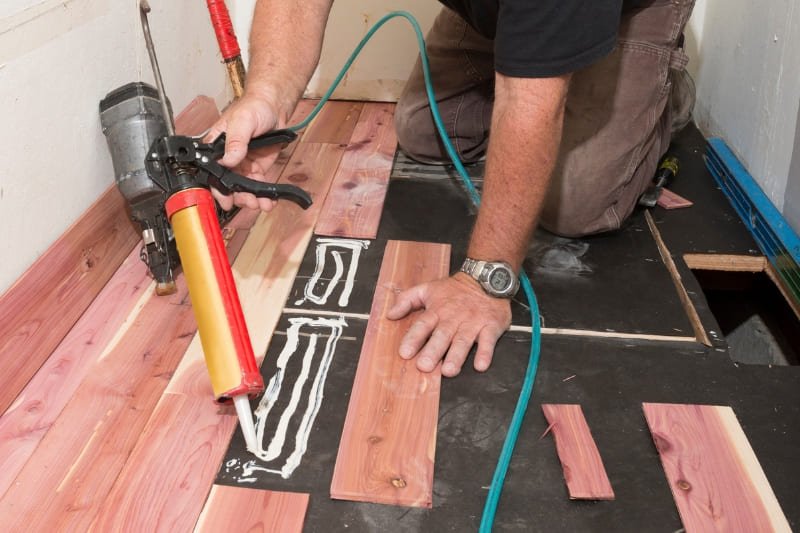
Finishing Touches: Enhancing Your Oak Floors
Choosing the right finish is crucial for achieving the desired look and protection for your oak flooring. The right finish enhances your floor’s aesthetics and durability:
Types of Finishes:
- Oil-Based vs. Water-Based Finishes: Oil-based finishes deepen the wood’s hue but take longer to dry; water-based finishes are quicker to dry and more eco-friendly.
- Stains and Sealants: Stains add color depth, while sealants protect against moisture and wear.
Custom Finishes and Personalization Options for Oak Flooring
Adding Texture or Distressing: Techniques like wire brushing or hand-scraping enhance the wood’s natural grain; distressing adds character with an aged look.
Transform Your Home with the Ideal Oak Flooring
After considering aesthetic and performance characteristics, you can select the ideal oak flooring to elevate your home. Whether you choose the warm allure of red oak or the elegant simplicity of white oak, you’re investing in a versatile, durable, and aesthetically pleasing flooring solution.
At Villagio Wood Floors, we offer a premium selection of engineered hardwood, including red and white oak, to meet your customers’ diverse preferences. Discover the quality and craftsmanship of Villagio Wood Floors and transform your spaces with beautiful, durable flooring.
FAQ: Everything You Need to Know About Red Oak and White Oak Flooring
Can I stain white oak flooring to achieve different colors?
Yes! You can stain white oak flooring to achieve different colors. Its adaptability to staining allows for a broad color range and offers numerous customization options.
Which oak flooring type is more durable?
White oak’s higher Janka rating makes it slightly more durable than red oak.
Can I mix red oak and white oak flooring in different areas of my home?
Yes! You can mix red and white oak flooring in different areas of your home. Mixing these woods can create appealing contrasts, but you must consider the grain and color differences to maintain a harmonious interior.
Which oak flooring is more resistant to scratches and dents?
White oak’s denser grain provides superior scratch and dent resistance, making it ideal for high-traffic and pet-friendly homes.
Can I install oak flooring over radiant heating systems?
Yes! Both red and white oak are compatible with radiant heating, ensuring comfort and warmth throughout your home.


